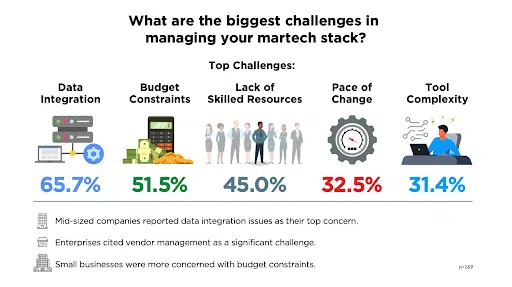What is martech and marketing technology?
Martech (a.k.a., marketing technology) includes the marketing software applications and marketing platforms) used by marketing and marketing operations professionals. These professionals use martech tools to create, execute, manage, orchestrate and measure the performance of their online and offline marketing efforts, including content, campaigns and experiences. Today, it’s difficult to imagine marketing that isn’t powred by […]
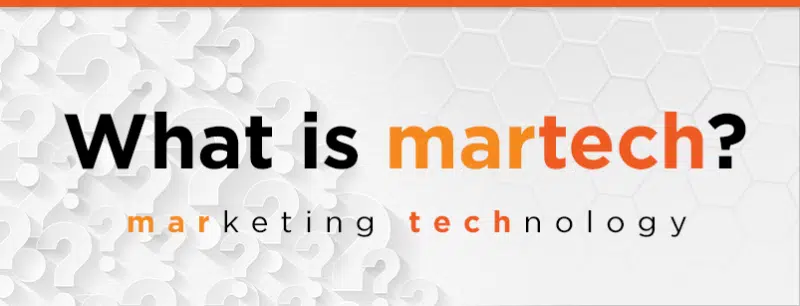
Martech (a.k.a., marketing technology) includes the marketing software applications and marketing platforms) used by marketing and marketing operations professionals. These professionals use martech tools to create, execute, manage, orchestrate and measure the performance of their online and offline marketing efforts, including content, campaigns and experiences.
Today, it’s difficult to imagine marketing that isn’t powred by technology (which is why here at MarTech, we say “MarTech is marketing.”
Others define martech even more broadly. Some definitions incorporate applications used by sales (salestech), by customer success teams as well as for advertising (adtech).
Contents
What is a ‘martech stack?’
The term martech stack refers to the collection of platforms and software applications used to create, execute, manage, orchestrate and measure the results of marketing activities. Stackscomprise commercial, off-the-shelf applications and/or homegrown software. Martech stacks range from the relatively simple to the highly complex. The number of applications in any given company’s stack varies widely, but for enterprises to have more than 100 is not uncommon.
Visual representations of a martech stack
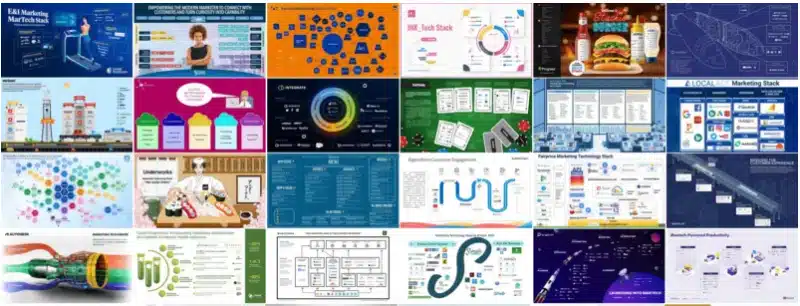
See examples of martech stacks here, here and here.
Number of martech software applications growing rapidly
The Marketing Technology Landscape, published by chiefmartec.com and its editor Scott Brinker, is the most frequently cited source of the rapid growth of martech. The 2024 edition lists more than 14,000 martech applications in 49 categories.
Growth has been rapid. In 2024, the martech landscape grew at a compound annual growth rate (CAGR) of 41.8%, marking an astounding 9,295% increase over a span of 13 years.
In its maiden year, 2011, just 150 solutions were listed on the Landscape.
Growth in martech software, 2011–2024
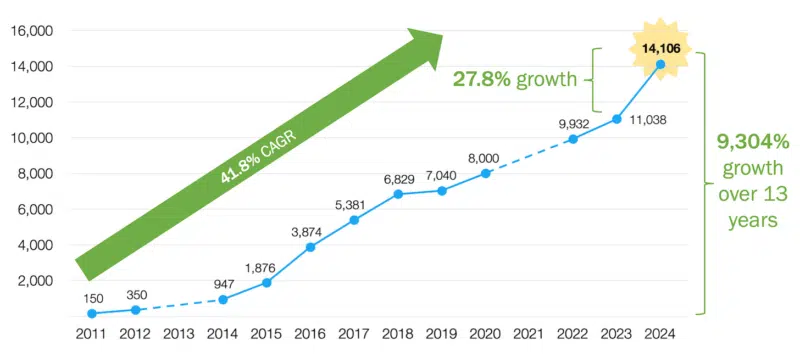
Popular martech applications
According to the 2025 State of Your Stack survey, which surveyed marketing and marketing operations professionals, 62% of the respondents are using more martech tools than they did two years ago.
The most popular applications found in the respondents martech stacks included:
| Customer relationship management (CRM) | 86.4% |
| Marketing automation platforms (MAP) | 76.9% |
| Content management systems (CMS) | 73.4% |
| Analytics/business intelligence | 72.2% |
| SEO tools | 69.2% |
| Generative AI tools | 68.8% |
Source: 2025 State of Your Stack Survey from MarTech, chiefmartec.com and MarketingOps.com.
Other popular martech applications include:
Customer data platforms (CDP), which are marketer-managed system designed to collect customer data from all sources, normalize it and build unique, unified profiles of individual customers. The result is a persistent, unified customer database that shares data with other marketing technology systems.
Customer journey analytics and customer journey orchestration software let marketers connect real-time data points from across channels, touchpoints and systems, allowing users to gain insights into the customer journey over time. This allows marketers to explore the customer journey using data.
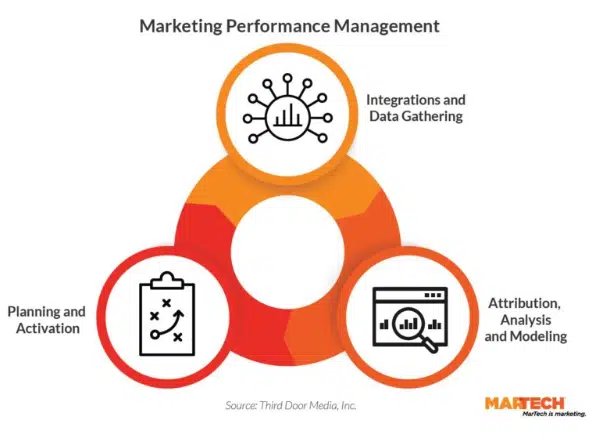
Marketing performance management (MPM) platform employs statistical modeling and machine learning to evaluate the performance of a company’s marketing initiatives on bottom-line impact. Its purpose is to help marketers allocate future spend and bring it in line with business goals.
SEO platforms offer numerous capabilities that range from keyword research and rank-checking to backlink analysis and acquisition, as well as competitive intelligence, social signal integration, and workflow rights and roles.
Enterprise-level platforms may also provide more extensive link and site audits or analytics that include predictive scoring systems to identify potential opportunities to improve page performance or link authority. Vendors differentiate by offering more frequent or detailed data updates or content marketing features that sometimes require additional investment.
Identity resolution platforms enable marketers to “close the loop” of customer marketing, analytics and compliance with a comprehensive holistic view of activity across all of an organization’s customer touchpoints and channels. Such identifiers can and should encompass both online (device, email, cookie or mobile ad ID) and offline (name, address, phone number) data signals and attributes.
Email marketing platforms offer features for email creation and sending, but consolidation and integrations have added to what one might have once expected. Common capabilities of these platforms include:
- Message design and creation.
- Workflow automation and collaboration.
- Message previewing.
- Email sending.
- Deliverability management.
- Data management.
- Ecommerce capabilities.
- Analytics and reporting.
- Third-party integrations.
- Automation and landing pages.
Digital asset management software, often called DAMs, store, organize and make useful an organization’s library of digital assets. A DAM is the “single source of truth” where marketers can find every relevant version of the media assets (a.k.a., marketing asset management) that have been created for the brand — images, PDFs, photographs, audio, video and even virtual reality or other cutting-edge formats.
A digital experience platform, also called a DXP, enables the creation, management, delivery and optimization of digital experiences in a variety of channels and contexts. A DXP differs from a content management system (CMS) in that it delivers to multiple digital channels, has commerce built-in and scales, among other things.
Call analytics platforms are one of the few martech applications that can track both online and offline leads. Call tracking — following a call from source (i.e., website, click-to-call search or display ad) to sales representative (i.e., based on geographic location or product line) — has been a core use case.
Account-based marketing software, or ABM, enables the implementation of B2B marketing strategies that align sales and marketing efforts on high-value accounts. This customer acquisition strategy focuses on delivering promotions — advertising, direct mail, content syndication, etc. — to targeted accounts. Individuals who may be involved in the purchase decision are targeted in a variety of ways, in order to soften the earth for the sales organization.
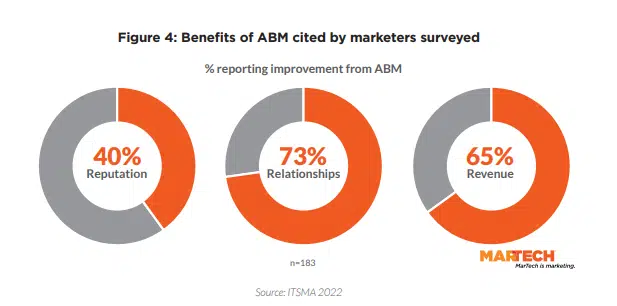
Digital events platforms enable event marketers and organizers to plan, deliver and measure the results of digital event experiences that serve geographically distributed audiences live or on-demand presentations.
Marketing and artificial intelligence
Artificial Intelligence (AI) is a widely discussed topic within the martech community. It is important to understand that it is not just another application like those listed in the section above. Rather, it is a process used in one way or another by many martech applications. AI is so-called because it is thought to simulate human intelligence, although it is far from clear that it actually mimics human brain processes.
In the simplest terms, AI consists of algorithms that not only automate certain desired outcomes (think of Amazon book recommendations), but also have the capacity to improve and optimize their own performance, with or without human supervision.
In the context of martech, AI was used for years now to power applications that personalize messages, recommend next-best-actions, perform sentiment analysis, tag digital assets — the list is endless.
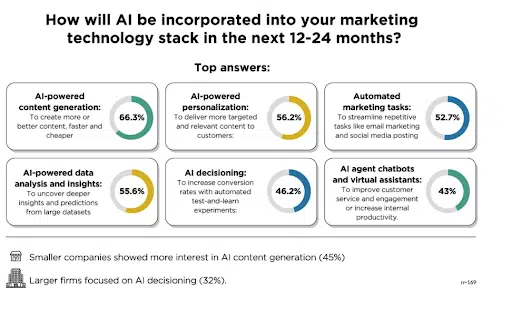
Generative AI in marketing
Generative AI (or genAI) is a type of AI that can be used to create texts or images (and more recently podcasts and videos too). It works by applying algorithms to large language models in order to predict a desired outcome (next-best-word, for example).
GenAI has been around for years,usually as a feature of enterprise-level applications. It was the recent democratization of genAI through the release of free tools such as ChatGPT that has created a huge wave of excitement about its possibilities for creating everything from marketing content to full campaigns — from campaign brief, to assets, to execution and optimization. On the marketing operations side, generative AI can be used to create code.
More recently, generative AI has been put to use in highly evolved versions of chatbots, often known as copilots and agents. These can be used to automate tasks previously performed manually, but at a more sophisticated level they can guide complex decision-making through conversational (natural language) prompts. They can even be set to work autonomously, although that clearly involves some risks. It’s particularly valuable that these copilots can be trained on a business’s own records and data. (We created a modest version of an AI chatbot trained on MarTech content: MarTechBot.)
Agentic AI in marketing
AI agents are more complex than generative AI instances. The differences between agentic AI and generative AI revolve around autonomy, multi-functionality, complex problem solving and goal setting and reasoning, all of which are areas where agentic AI has the advnatage.
In marketing, agentic I can help marketers optimize marketing campaigns, forecast outcomes and personalized content creation.
The history of martech? A (super) long view
It’s tempting to think martech began somewhere around the same time of Brinker’s Landscape, given that there were only 150 marketing software applications identified in the first edition in 2011.
CDP Institute founder, David Raab traces marketing technology back about 37,000 years to when the first signs began appearing.
The Marketing Technology Timeline chronicles significant developments in three categories: marketing channels; the tools marketers use to manage those channels; and data available to marketers. The yellow highlighting demonstrates the volume of technology available during each period.
Raab’s main point: Marketing technology and using data to enhance campaign performance didn’t emerge in any significant way until computers were applied to list management in the 1970s, and expanded rapidly with the adoption of the Internet in the 1990s and 2000s.
The number of marketing channels proliferated throughout the industrial and computer ages. Proliferation also accelerated with the advent of the internet. The yellow areas represent the volume of technology available during each period.
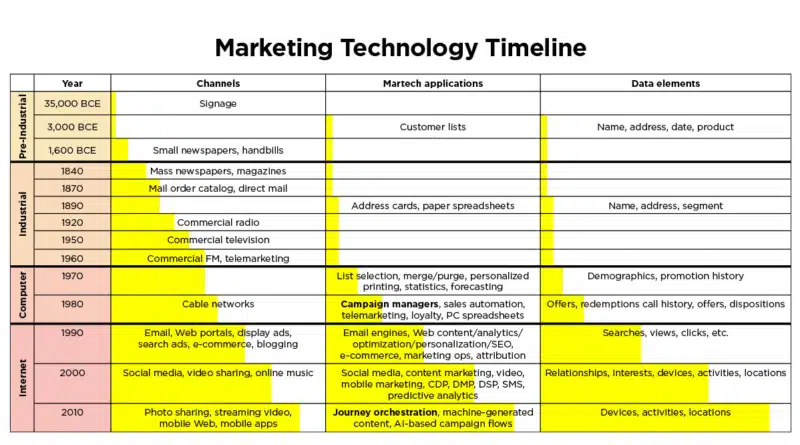
Is adtech part of martech?
Advertising technology, or adtech, is a category of martech that enables marketers to buy, deliver and measure digital advertising campaigns.
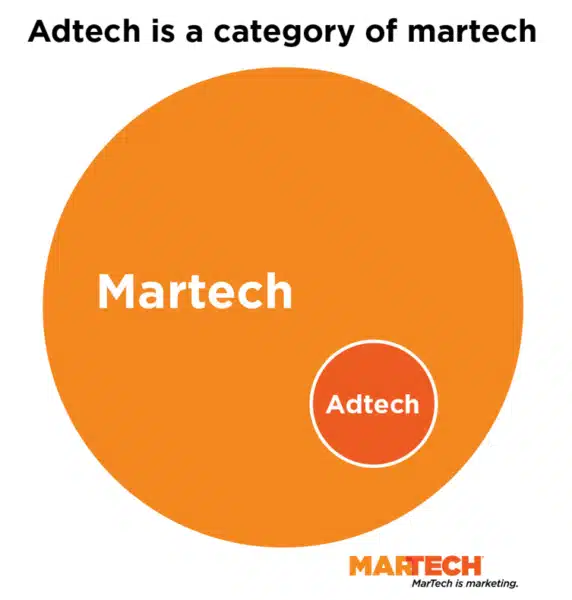
Adtech applications include demand-side and supply-side platforms, ad servers, viewablity and measurement tools and brand safety assurance providers.
Challenges and concerns related to martech tools
Concerns around data have plagued marketing and marketing ops professionals for some time. The fall 2024 MarTech Replacement Survey found cost was the most important factor for respondents looking to replace a martech application. Still, the top four responses touched on data issues like integration, open APIs and more.
Here are the top martech management challenges marketing and marketing operations professionals shared related to challenges in the 2025 State of Your Stack Survey.
Budget constraints are more likely to be an issue for small organizations (less than $25 million in annual revenue), while vendor management is the top challenge for large companies, which are most likely to have complex stacks.
Data once again found its way into martech stack concerns when the 2025 State of Your Stack Survey asked about the biggest concerns for the future. This time, data silos were the top concern, followed by cost of ownership and adaptation to change.
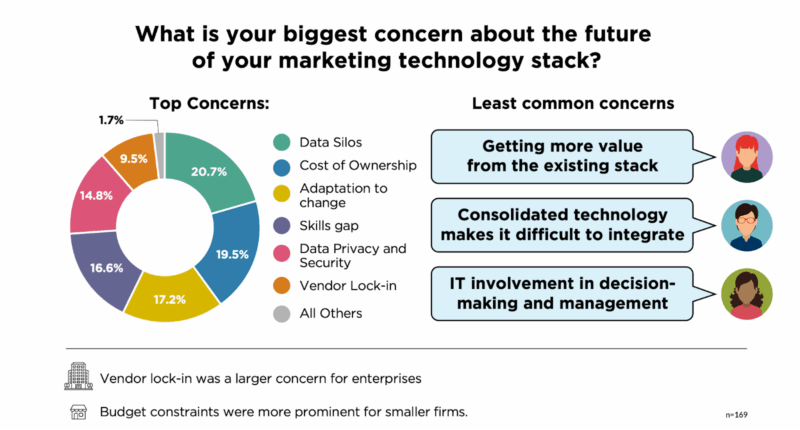
When asked about barrier to martech adoption, the top areas cited by respondents to the 2025 State of Your Stack Survey were budget constraints and time and talent constraints.
Concerns about the complexity of implementation might be part of the pressure to see ROI from martech investments. Long deployment times without a return are a hard sell to senior leaders who are watching every penny.
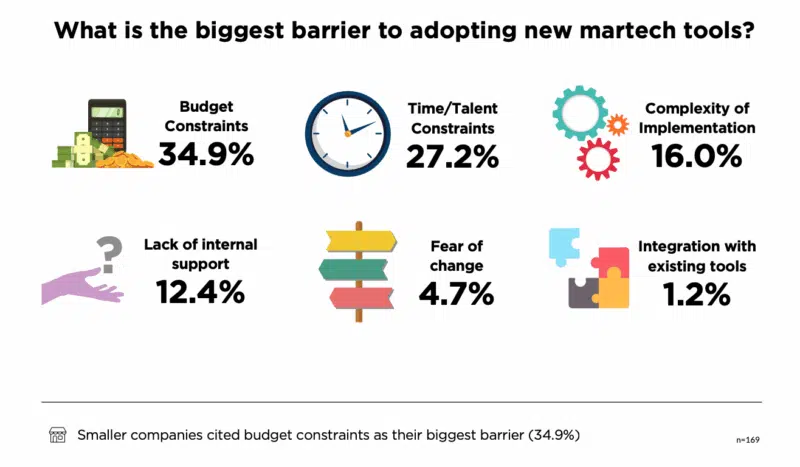
Martech: The industry
Martech is an industry in addition to being a variety of platforms or software. Thousands of companies, large and small, offer a variety of marketing software solutions to aid marketers in their quest to identify potential buyers, close sales and provide customer service.
According to Forrester, global martech spending is expected to surpass $215 billion annually by 2027, up from $131 billion in 2023.
Forrester expects B2B martech spending in the U.S. to total more than $8.5 billion. In B2C marketing, Forrester projects martech spending to reach $14.54 billion in 2024.
